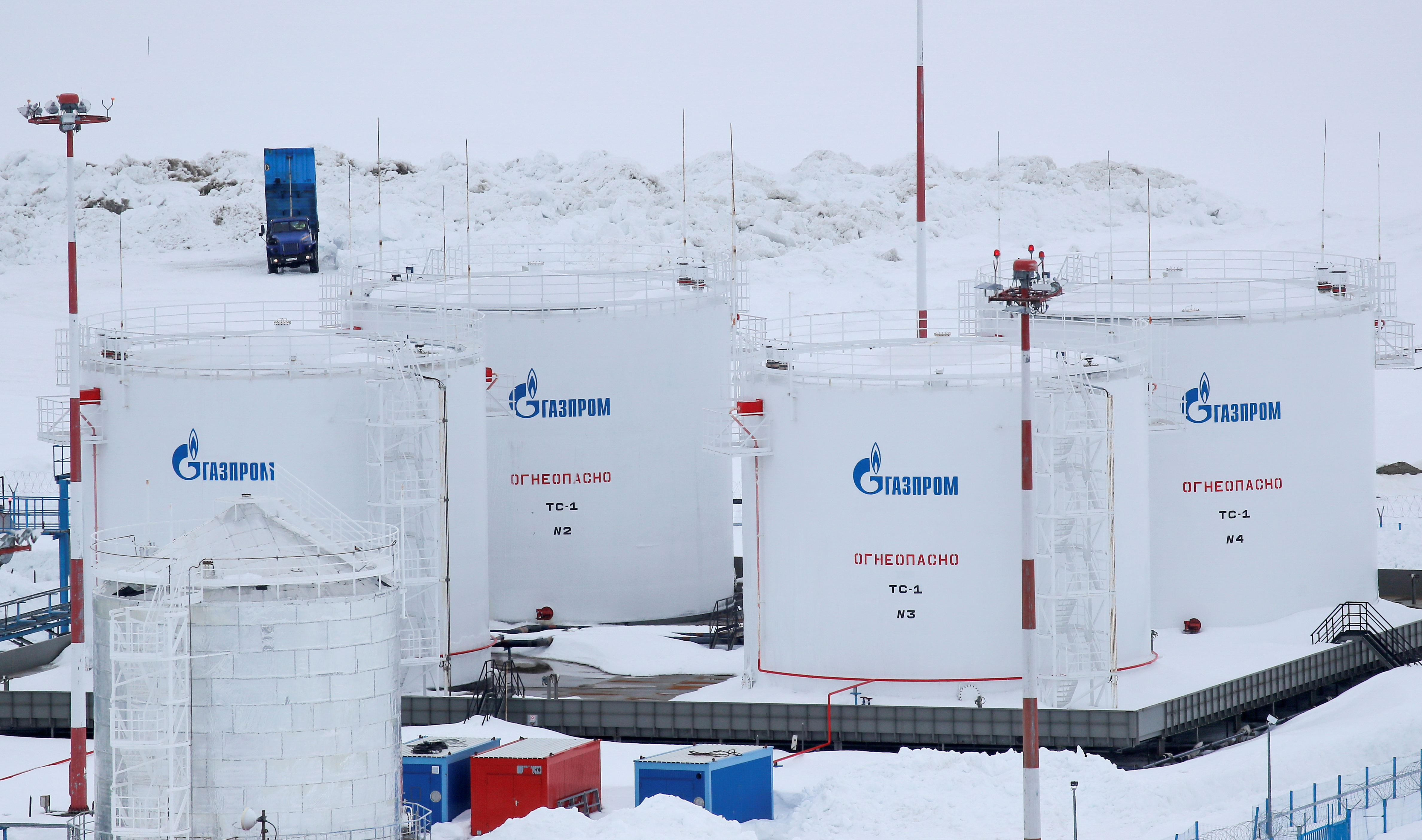
LONDON, March 3 (Reuters) – Europe’s gas futures prices for next winter are surging to a record high as traders anticipate the energy shortage will last into 2023, putting financial pressure on households and businesses across the region.
The risk of shortages this winter has been eliminated thanks to warmer-than-normal temperatures and high prices encouraging fuel-switching to coal, but now the focus has shifted to next winter.
Despite recent mild weather, stocks heading into spring are well below normal levels and Europe will have to attract significant imports and curb consumption through the summer to rebuild them ahead of the next onset of winter.
Until then, Europe will be competing with countries in South and East Asia to attract LNG cargoes and refill storage sites.
At the same time, the escalating economic conflict between the EU and Russia risks pipeline flows being reduced or cut off completely, either by sanctions or retaliation, leaving the region unable to accumulate sufficient stocks.
As a result, benchmark Dutch TTF futures for gas deliveries in January 2023 have doubled to 150 euros per megawatt-hour, up from 72 euros at the start of last week before Russia invaded Ukraine.
NEXT WINTER IS COMING
Gas inventories in the EU and Britain are on course for a post-winter low this year of around 259 terawatt-hours (TWh), with a projected range from 209 TWh to 309 TWh.
The position has become much more comfortable since Christmas, when the post-winter low was projected at just 212 TWh, with a range from 69 TWh to 397 TWh.
(Chartbook: https://tmsnrt.rs/3MuXvlU)
But inventories will still end winter significantly below the pre-pandemic five-year average of 315 TWh and the ten-year average of 348 TWh, according to data compiled by Gas Infrastructure Europe.
In the last ten years, inventories have risen by an average of 575 TWh between the start of April and the post-summer peak, as the warmer weather allows excess production and imports to be injected into storage sites.
If this year’s inventory accumulation follows the average path, however, post-summer storage will peak at only 834 TWh, compared with 865 TWh last year, and the lowest level since 2013.
To ensure inventories go into winter 2022/23 in a more comfortable position, Europe will need much larger injections than normal, implying high prices to attract LNG away from Asia and ration consumption by electricity generators.
The need to boost inventories ahead of next winter is already pushing prices for the next few weeks and months to record levels to discourage consumption as much as possible and leave more gas in storage.
Futures prices for deliveries in April have recently been trading at more than 160 euros per megawatt-hour in an effort to establish a higher post-winter baseline from which stocks can start accumulating.
KEY SANCTIONS ISSUES
Despite the risks, some U.S. and EU commentators and policymakers have started to explore the possibility of sanctioning Russia’s gas exports to deprive the country of revenue in response to the invasion of Ukraine.
“Within the next year at least, this is the moment the west can free itself from this dependency at the least level of self-damage. Spring is coming, and with it lower heating demand,” columnist Martin Sandbu wrote in the Financial Times on Thursday.
“It is possible to run down stored reserves and there would be time to find alternative sources to refill the stores by next winter,” he writes (“Why the EU should end Russian gas imports now”, FT, March 3).
But there are not sufficient sources of additional LNG to refill seasonal storages in Europe and Asia and North America before next winter in the event of a loss of Russia’s pipeline exports.
Some of Russia’s pipeline exports to Europe could probably be redirected to customers in Asia via alternative pipelines and LNG, provided payment systems could be found to work around financial sanctions.
But the gas transport system cannot redirect all gas flows quickly: some of Russia’s output would have to be stopped for lack of logistics.
Sanctioning Russia’s pipeline exports would therefore lead to a net loss of gas available to the world market and send prices spiking for all consumers.
Restricting Russia’s gas exports would likely send gas and electricity prices soaring across Europe and Asia, intensifying inflation and heightening the risk of a recession.
Sanctions would therefore impose a severe financial cost on households and businesses in Europe and Asia already struggling with steeply rising utility bills and falling real wages.
The principal argument for sanctioning Russia’s gas exports now is that rapid escalation (“shock and awe”) could force a quick resolution of the conflict (“Shock and awe: achieving rapid dominance”, Ullman and Wade, 1996).
Gas exports lost in the next few days or weeks as a result of sanctions could be made up later in the year once the conflict is over or at least stabilised and sanctions are relaxed.
But the storage season only lasts between six and eight months so sanctions would have to be imposed then eased quickly to avoid a significant and irrecoverable loss of global supplies.
U.S. and EU policymakers are nonetheless coming under increasing pressure from opinion formers to consider sanctions on Russia’s oil and gas exports as the military conflict in Ukraine escalates.
Traders have already started to anticipate the possibility of at least some restrictions on pipeline flows – either intentionally as a result of sanctions or unintentionally as a result of payments and banking problems.
Sanctions risks have doubled futures prices for next winter even as the inventory situation at the end of this winter has improved slightly in recent weeks.
In most scenarios, Europe’s and Asia’s gas prices are set to remain very high throughout spring and summer – and they could rise to extreme levels if a sustained disruption of Russia’s pipeline exports becomes a reality.
John Kemp is a Reuters market analyst. The views expressed are his own.
Share This:




 CDN NEWS |
CDN NEWS |  US NEWS
US NEWS 



























